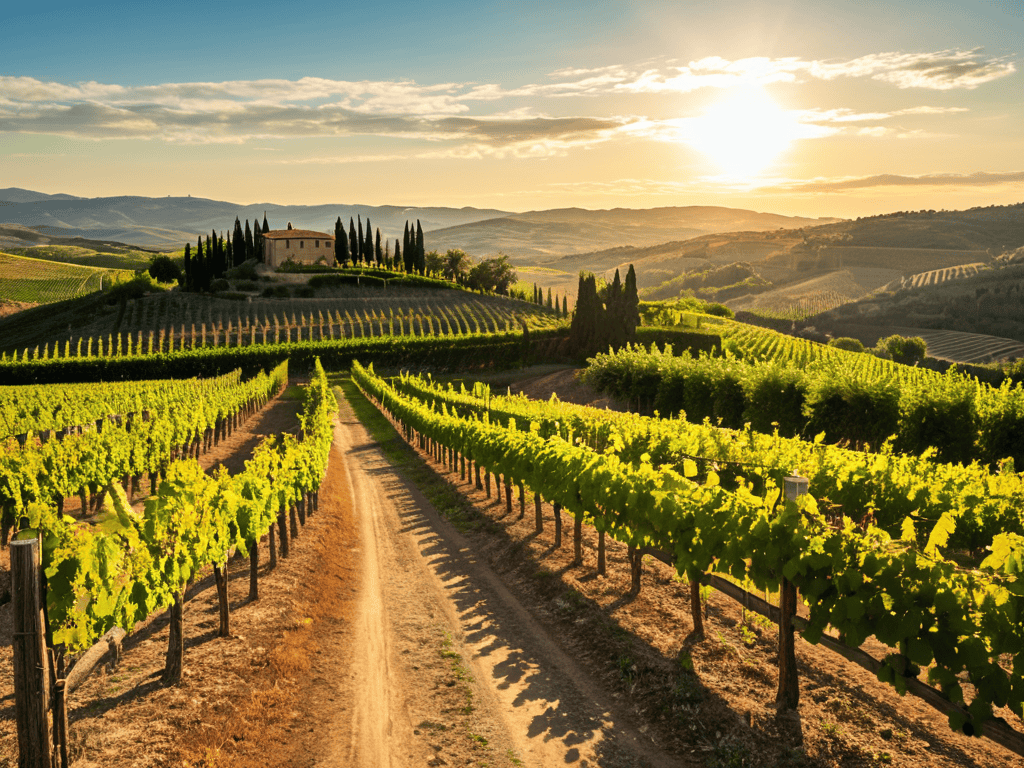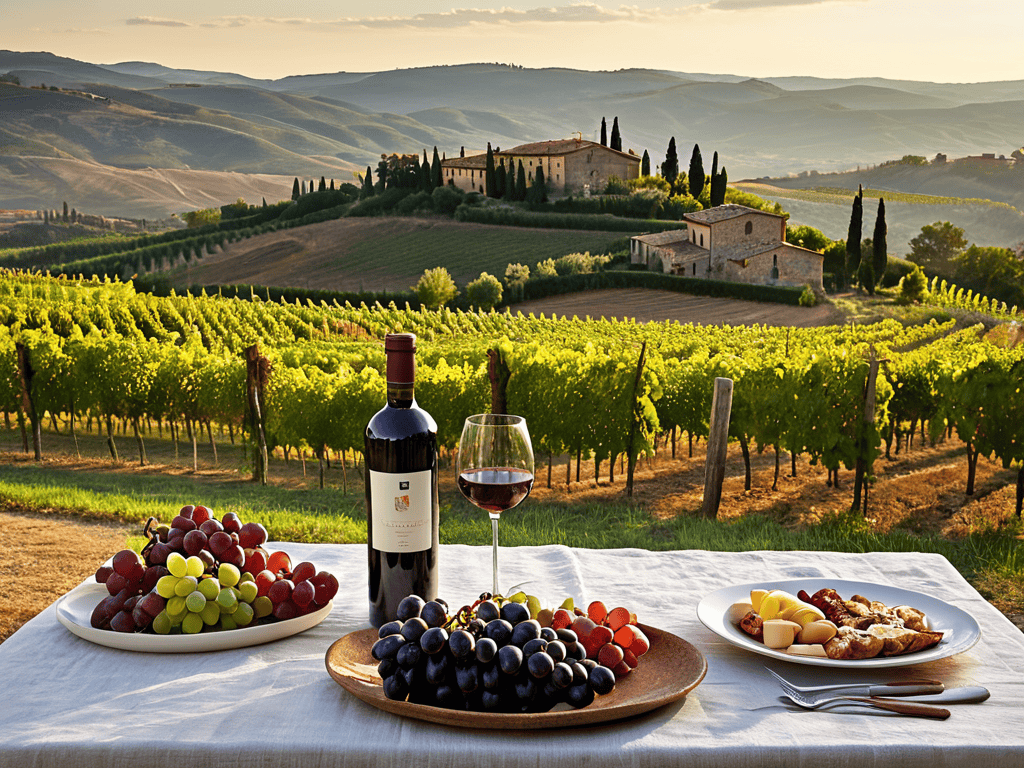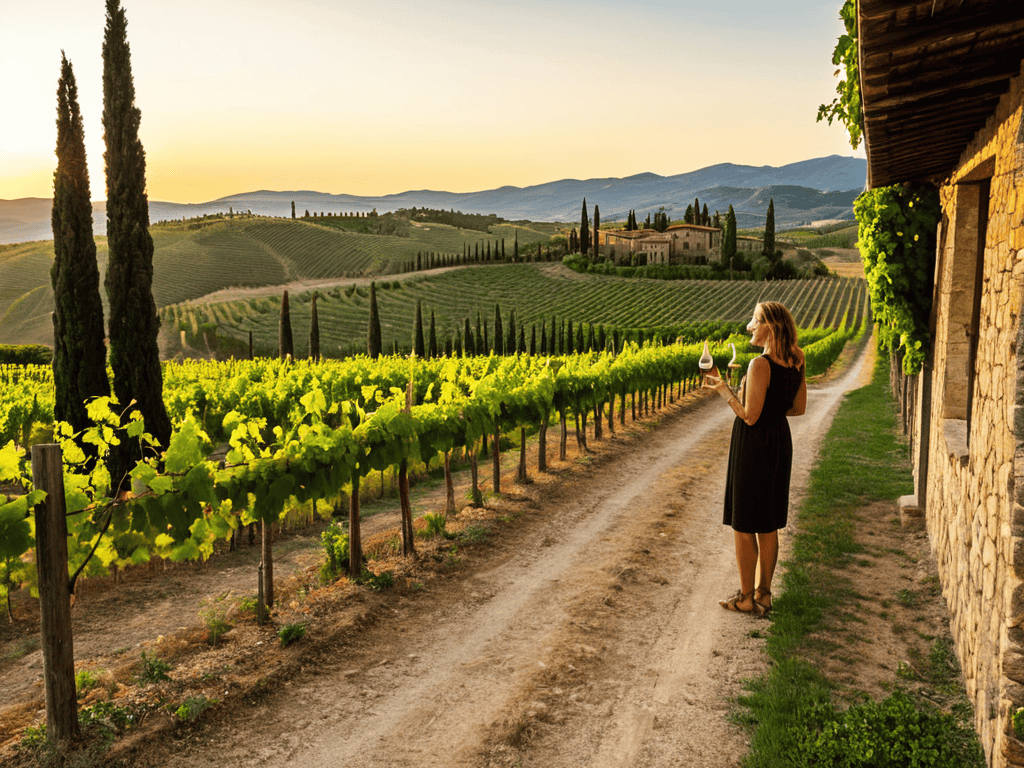I still remember the day I stumbled upon a hidden vineyard in Tuscany, Italy, where the owner, a warm-hearted nonna, shared with me the secrets of _la dolce vita_. It was a moment that changed my perspective on wine tasting trips. As I sat on a worn wooden bench, sipping a rich Chianti, I realized that planning a wine tasting trip to Tuscany, Italy, is not just about visiting fancy vineyards, but about immersing yourself in the local culture. If you’re looking to _how to plan a wine tasting trip to Tuscany, Italy_, you’re likely to be overwhelmed by the numerous options and guides available.
But, let me tell you, my friend, the real magic happens when you venture off the beaten path. In this article, I’ll share with you my _insider’s guide_ to planning an unforgettable wine tasting trip to Tuscany. You’ll learn how to navigate the region like a local, discover hidden gems, and experience the authentic flavors of Tuscany. From choosing the right vineyards to visiting local markets, I’ll provide you with practical advice and tips to make your trip an unforgettable experience. So, grab a glass of wine, and let’s dive into the world of Tuscan wine, where every sip tells a story of passion, tradition, and _la dolce vita_.
Table of Contents
- Guide Overview: What You'll Need
- Step-by-Step Instructions
- Sipping Tuscanys Secrets
- Savoring la Dolce Vita: 5 Insider Tips for Planning an Unforgettable Wine Tasting Trip to Tuscany
- Savoring the Essence of Tuscany: 3 Key Takeaways
- Savoring La Dolce Vita
- Savoring La Dolce Vita: A Lasting Impression
- Frequently Asked Questions
Guide Overview: What You'll Need

Total Time: several days to a week
Estimated Cost: $2,000 – $5,000
Difficulty Level: Intermediate
Tools Required
- Computer (for research and booking)
- Map of Tuscany (to plan itinerary)
- Travel Guidebook (for recommendations and tips)
Supplies & Materials
- Plane Ticket to Italy
- Car Rental (for transportation in Tuscany)
- Accommodation Bookings (hotels, villas, or agriturismos)
- Wine Tasting Reservations (at local vineyards and wineries)
- Travel Insurance (optional but recommended)
Step-by-Step Instructions
- 1. First, let’s start with the basics: deciding when to go. Tuscany is a year-round destination, but if you’re looking for the perfect time to taste some of the world’s best wines, consider visiting during the _harvest season_, which typically takes place between September and October. The atmosphere is electric, and you’ll have the chance to see the grape-picking process up close.
- 2. Next, you’ll need to choose your _home base_ for the trip. I always recommend staying in a smaller town like San Gimignano or Volterra, rather than a big city like Florence. These charming towns offer a more authentic Tuscan experience, and you’ll be closer to the vineyards and wineries you want to visit.
- 3. Now it’s time to research the vineyards and wineries you want to visit. Look for places that offer _private tours_ and wine tastings, and make sure to book them in advance. Some of the most famous vineyards in Tuscany can get quite busy, especially during peak season. I recommend focusing on smaller, family-owned wineries, where you’ll have the chance to meet the winemakers and learn about their _traditions_.
- 4. To get the most out of your wine tasting experience, consider hiring a local guide who can take you to the hidden gems of Tuscany. These guides often have _inside knowledge_ of the best vineyards and can arrange private tours and tastings. They can also help you navigate the _countryside_ and ensure that you don’t get lost in the rolling hills.
- 5. Once you have your itinerary planned, it’s time to think about _logistics_. Renting a car is a good idea, as it will give you the freedom to explore the countryside at your own pace. Just make sure to _designate a driver_ for each day’s wine tastings, as you won’t want to risk driving after a few glasses of Chianti.
- 6. As you plan your days, be sure to leave some _room for spontaneity_. Tuscany is a place where you’ll want to get lost in the narrow streets, stumble upon _local markets_, and indulge in delicious street food. Don’t be afraid to try new things and venture off the beaten path – it’s often the best way to discover the _real_ Tuscany.
- 7. Finally, don’t forget to _immerse yourself_ in the local culture. Attend a wine festival, visit a _local market_, or take a cooking class to learn about traditional Tuscan cuisine. These experiences will help you understand the _context_ of the wines you’re tasting and give you a deeper appreciation for the region’s rich culinary heritage.
Sipping Tuscanys Secrets

As I wandered through the rolling hills of Tuscany, I discovered that the true magic of this wine region lies in its hidden gems. To experience the authentic taste of Tuscany, it’s essential to venture off the beaten path and explore the local vineyards. I recall a particular visit to a small, family-owned winery, where I was treated to a wine and food pairing extravaganza. The owner, a warm and welcoming nonna, shared with me the secrets of pairing their estate’s wines with traditional Tuscan dishes.
When it comes to navigating the tuscany wine region map, I recommend taking your time and getting lost in the charming countryside. You’ll stumble upon quaint villages, medieval towns, and of course, exceptional wine estates. Be sure to plan your visit during the best time to visit tuscany vineyards, which is typically during the spring and autumn seasons. This will allow you to avoid the crowds and enjoy a more intimate experience with the local winemakers.
As I delved deeper into the world of Tuscan wines, I found myself navigating a complex web of vineyards, wine regions, and hidden gems. To make the most of my wine tasting trip, I relied on a few trusted resources, including a fantastic online community that helped me connect with local wine enthusiasts and uncover the best-kept secrets of the region. One such resource that proved invaluable was a website I stumbled upon, which offered a wealth of information on wine regions and vineyard visits – you can check it out here: erotikkontakte. By leveraging these kinds of local insights, I was able to create a truly unforgettable itinerary that took me off the beaten path and into the heart of Tuscany’s wine country.
For a truly immersive experience, consider booking one of the tuscany wine tour packages that include accommodations near the renowned Chianti vineyards. And, if you’re planning to drive through the region, be sure to brush up on your driving in tuscany tips, as the winding roads can be quite narrow and scenic. With a little planning and insider knowledge, you’ll be well on your way to sipping your way through Tuscany’s secrets and creating unforgettable memories.
Best Time for Vineyard Visits
As I wandered through Tuscany’s rolling hills, I discovered that the best time for vineyard visits is during the spring and autumn seasons. The mild weather makes for perfect strolls through the vineyards, and the scenery is simply breathtaking. I recall a particular visit to a small, family-owned vineyard in Chianti, where the owner, Giovanni, welcomed me with a warm smile and a glass of his finest Sangiovese. The air was filled with the sweet scent of blooming wildflowers, and the sound of birds singing in the distance.
These seasons offer a unique glimpse into the vineyard’s daily life, with harvest activities in full swing during autumn and pruning taking place in the spring. I’ve found that visiting during these times allows for a more authentic and immersive experience, as you get to see the vineyard in action and meet the people behind the wine. Plus, the crowds are smaller compared to the peak summer months, making for a more intimate and personalized visit.
Decoding Tuscany Wine Region Map
As I delved deeper into Tuscany’s wine scene, I found that understanding the region’s map was key to unlocking its secrets. The area is divided into several distinct wine zones, each with its own unique characteristics and specialties. From the rolling hills of Chianti to the coastal vineyards of Bolgheri, every zone has its own story to tell. I recall sitting with a local winemaker in a tiny village, poring over a dusty map, and learning about the nuances of each area.
By decoding this map, you’ll be able to navigate the region like a local, discovering hidden gems and tasting some of the world’s most renowned wines. I’ve found that the best way to experience Tuscany’s wines is to explore its diverse regions, from the Vernaccia vineyards of San Gimignano to the Brunello di Montalcino zone. With this knowledge, you’ll be well on your way to sipping your way through Tuscany’s hidden gems.
Savoring la Dolce Vita: 5 Insider Tips for Planning an Unforgettable Wine Tasting Trip to Tuscany
- Start your journey in the charming hill towns, where the locals will share with you the secrets of the region’s best-kept wines, from the bold Brunellos to the elegant Chiantis
- Rent a vintage car and drive through the rolling hills and scenic vineyards, stopping at family-owned wineries to taste the latest vintages and learn about the traditional production methods
- Indulge in a traditional Tuscan lunch at a local trattoria, where you can feast on ribollita, pappardelle, and cantucci con vin santo, all paired with a glass of wine from the nearby vineyards
- Visit the local markets, such as the one in Siena, to discover artisanal producers of wine, cheese, and olive oil, and learn about the region’s rich culinary heritage
- Take a guided tour of a medieval castle winery, where you can uncover the history and mystery behind Tuscany’s most renowned wines, and enjoy a private tasting in the castle’s cellar
Savoring the Essence of Tuscany: 3 Key Takeaways
As you embark on your wine tasting journey through Tuscany, remember that the authentic experience lies not just in the wine, but in the stories of the people and the land that craft it.
To truly immerse yourself in la dolce vita, plan your vineyard visits during the Shoulder Season, when the crowds are smaller and the winemakers have more time to share their secrets and passions.
Whether you’re a seasoned oenophile or just beginning to explore the world of wine, the key to unlocking Tuscany’s wine secrets is to venture off the beaten path, to follow the winding roads that lead to hidden gems, and to always keep a sense of curiosity and adventure in your heart.
Savoring La Dolce Vita
The art of planning a wine tasting trip to Tuscany isn’t just about mapping vineyards, it’s about unraveling the threads of tradition, family secrets, and the rustic charm that weaves this region into a tapestry of unforgettable flavors.
Marco Bianchi
Savoring La Dolce Vita: A Lasting Impression

As I reflect on our journey through the rolling hills and vineyards of Tuscany, I’m reminded of the essence of wine country: the people, the passion, and the pursuit of perfection in every bottle. From decoding the Tuscany wine region map to timing your vineyard visits for the best experience, we’ve covered the essentials to plan an unforgettable wine tasting trip. Whether you’re a seasoned oenophile or just discovering the joys of wine, Tuscany has a way of captivating your senses and leaving you yearning for more. As you embark on your own Tuscan adventure, remember to indulge in the local cuisine, soak up the scenery, and cherish the moments shared with fellow travelers and the warm-hearted locals.
As you uncork your first bottle of Tuscany’s finest, I hope you’ll recall the stories of the region’s rich history, the artisanal craftsmanship that goes into each vintage, and the unbridled passion of the people who bring it all to life. Let the bold flavors and aromas transport you back to the sun-kissed vineyards, and may the memories of your time in Tuscany inspire you to continue exploring the world, one wine region at a time. For in the end, it’s not just about the wine – it’s about the journey, the people you meet along the way, and the flavors that forever change your perspective on the beauty of la dolce vita.
Frequently Asked Questions
What are the must-visit vineyards in Tuscany for a wine tasting trip?
Ah, the crème de la crème of Tuscan vineyards! You gotta visit Castello di Ama, Fattoria San Giusto a Rentennano, and Castello di Brolio – the holy trinity of Chianti Classico. And for a real treat, sneak into the hidden gem, Fattoria Le Pupille, for a taste of their legendary Morellino di Scansano. Trust me, these vineyards will make your wine tasting trip unforgettable!
How can I ensure an authentic wine tasting experience in Tuscany, beyond the typical tourist trails?
Dive into the local scene by visiting family-run vineyards, like those in Chianti Classico. Skip the brochures and ask locals for hidden gems, then soak up the la dolce vita atmosphere over a glass of Brunello with the winemakers themselves.
What are some traditional Tuscan dishes or recipes that pair perfectly with the region's wines?
Ah, you’re in for a treat! Tuscan cuisine is all about hearty, simple flavors. Try pairing a rich Chianti with ribollita, a comforting soup made with veggies and cannellini beans, or match a crisp Vernaccia with pappardelle al cinghiale, a wild boar ragù that’s a staple in these hills.
